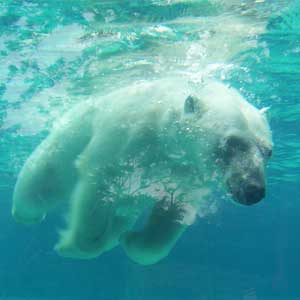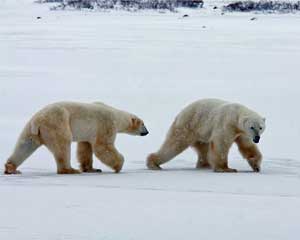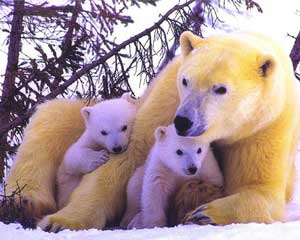Facts about Polar Bears
Posted by Admin / in Science Facts

Polar Bear Facts
Important Polar Bear Facts
- Polar bears are mammals. They are warm-blooded, maintaining a body temperature of 98.6 degrees Fahrenheit even through through they live in some of the coldest areas of the world.
- Polar bears only live in the Northern Hemisphere in the wild. They live naturally in 5 countries including Canada, the United States (Alaska), Russia, Greenland and Norway. Scientists estimate more than half of polar bears found in the wild are in Canada.
- Polar bear habitat is pack ice and coastline in and around the Arctic Ocean.
- Polar bear babies are called cubs. Polar bear cubs weight only one pound when they are born.
- Polar bears grow to be the largest bears. Full size male polar bears can weigh 1700 pounds (770 kg) or more. This is larger than Grizzly bears or Kodiak bears.
- Polar bears have black skin. You can see part of their skin on their noes, eyes, inside their ears and on their paws. Even though polar bears look white their fur is not white. Their fur is clear. Polar bear fur is also hallow, with space inside each hair. Light that reflects off polar bear fur looks white. Their hallow fur acts like insulation over their thick black skin to help keep them warm.
- Polar bears have a 2 inch (50mm) thick layer of water repellent fur.
- Polar bears also have a 4-5 inch (100-125mm) thick layer of fat under their skin that keeps them warm during the coldest night or even underwater. This fat layer also helps them to store energy between meals.
- Their white appearance helps a polar bear blend in with their polar surroundings allowing them to become a better hunter.
- Polar bears prefer to eat ringed seals, although they are known to eat walruses, fish and beluga whales.
- Polar bears only eat the skin and blubber of a ringed seal, leaving behind the meat for scavengers on the tundra. One seal per week is enough to keep an adult polar bear well-fed.
- Polar bears are excellent swimmers. With their long legs and huge paws they can swim faster than they walk. Polar bears are known to swim more than 30 miles (40-50 kilometers) between floating pieces of ice.

Polar bears in the arctic
Interesting Polar Bear Facts
- Polar bear babies are normally born in January during some of the coldest weather of the year. Yet, they stay warm, protected in their mother's den until the weather warms.
- Polar bears generally do not hibernate like other large bears. Only mother bears hibernate in a den while expecting a baby polar bear.
- A majority of polar bear mothers give birth to twins.
- Polar bear babies stay with their mother for the first two years of their life. By this time, polar bears weigh over 30 pounds. Scientists estimate, however, that only 1 out of 4 polar bear babies survives to grow large enough to leave their mother.
- Adult polar bears have huge 12" paws. Their large feet allow them to walk on thick snow like snowshoes.

Only 1 in 4 polar bears survive to become an adult.
